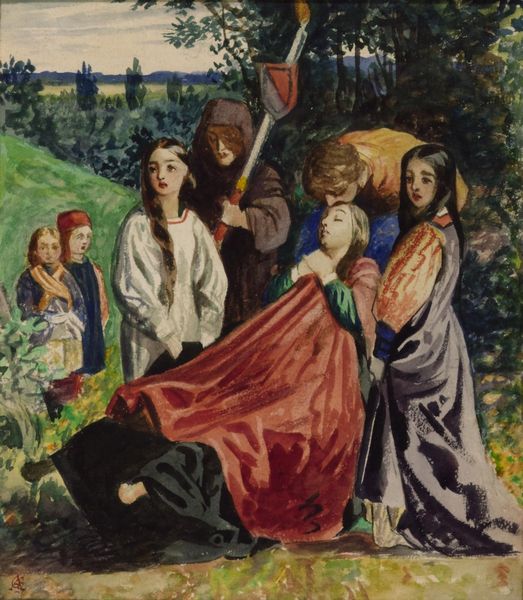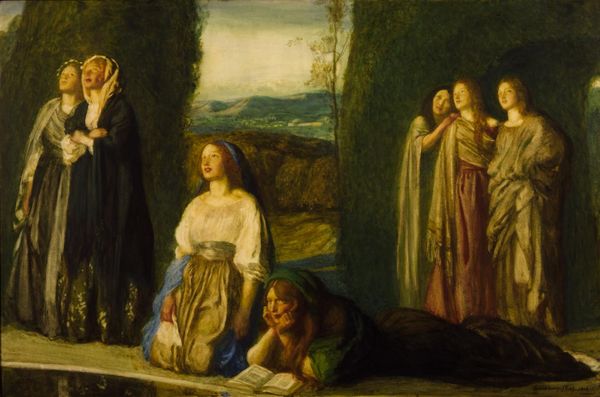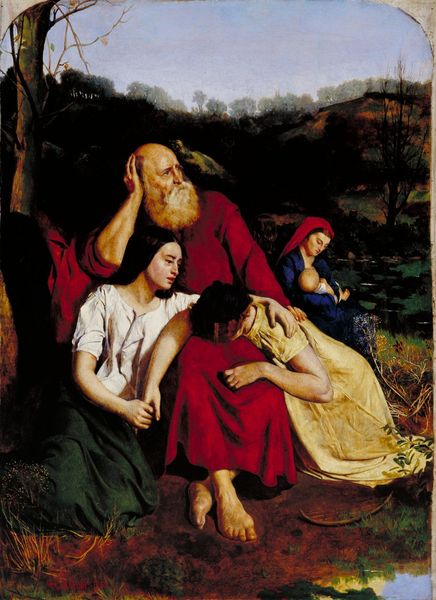
Copyright: Public domain
Editor: Here we have James Archer’s "La Mort d'Arthur" from 1860, an oil painting that immediately strikes me as incredibly poignant. The scene is rife with emotion, emphasized by the arrangement of figures around the fallen Arthur. What do you see in this piece, viewed through a formalist lens? Curator: Immediately apparent is Archer's masterful manipulation of color and light to direct the viewer's eye. Notice how the cool blues and greens of the landscape contrast with the warm, saturated tones in Arthur's robes and the faces of the women surrounding him. The chromatic scheme seems orchestrated to imbue Arthur with visual importance. Editor: That’s fascinating. The color contrast definitely heightens the drama. But what about the composition itself? Curator: Indeed, the composition adheres to a structured arrangement where each figure contributes to the overall visual harmony. The women form a semi-circle, their gazes converging towards Arthur, creating a cohesive unit that draws us into their emotional space. Can you see the emphasis given by the light source to this figure’s faces and the hero’s robes? Editor: Yes, now that you point it out, it's a striking pyramidal arrangement that reinforces the visual focus on Arthur. And the horizontal lines of the sea and shore add a sense of depth and tranquility. Curator: Precisely. This carefully constructed scene encourages viewers to contemplate the interplay of form and content and to reflect on its symbolic language. I observe how he uses form, colour and tone to enhance narrative. Editor: That's a powerful way to look at it; shifting the focus from narrative to pure artistic expression. Thank you, I never considered the arrangement in such meticulous detail. Curator: You're welcome. The formal elements unlock many possibilities for appreciating artwork.
Comments
No comments
Be the first to comment and join the conversation on the ultimate creative platform.













